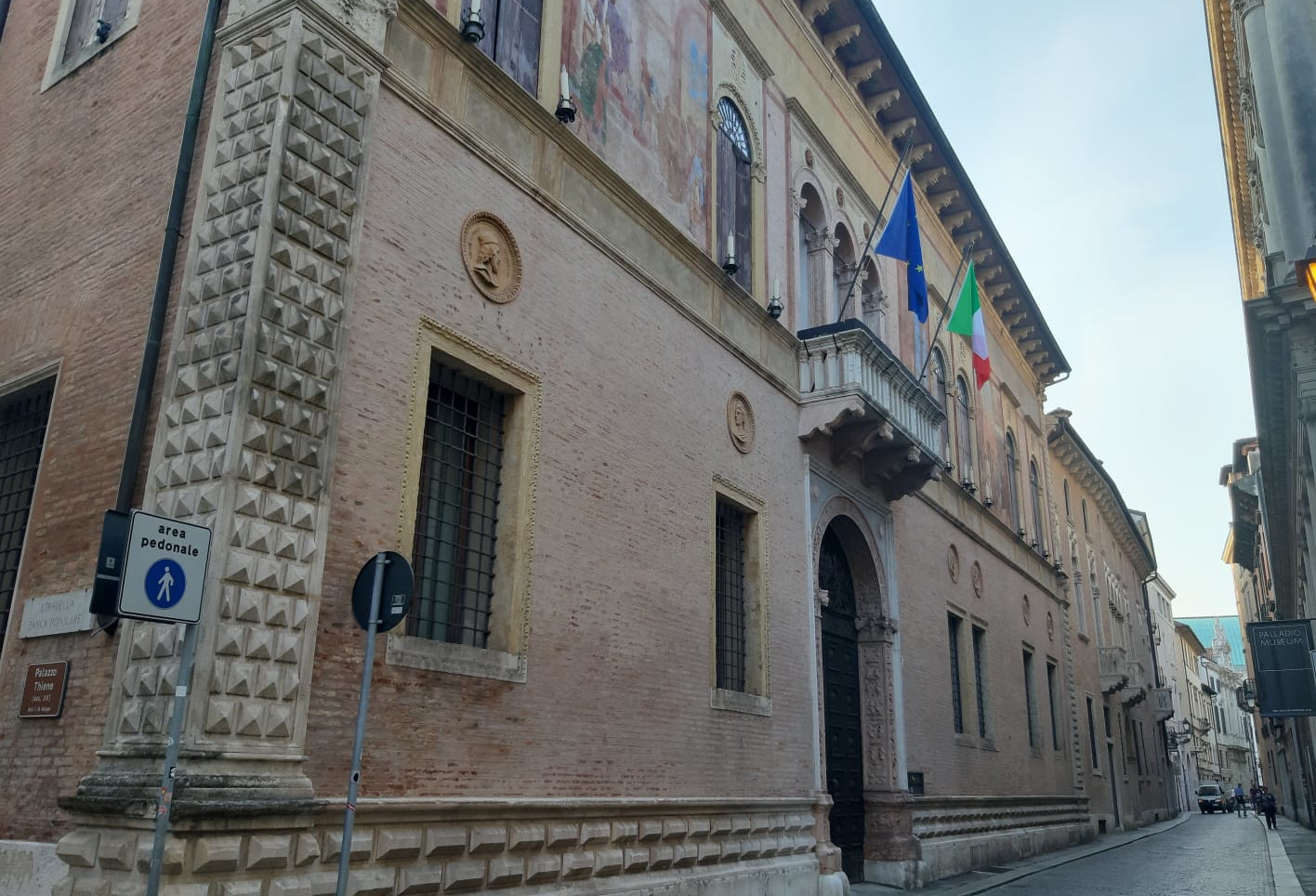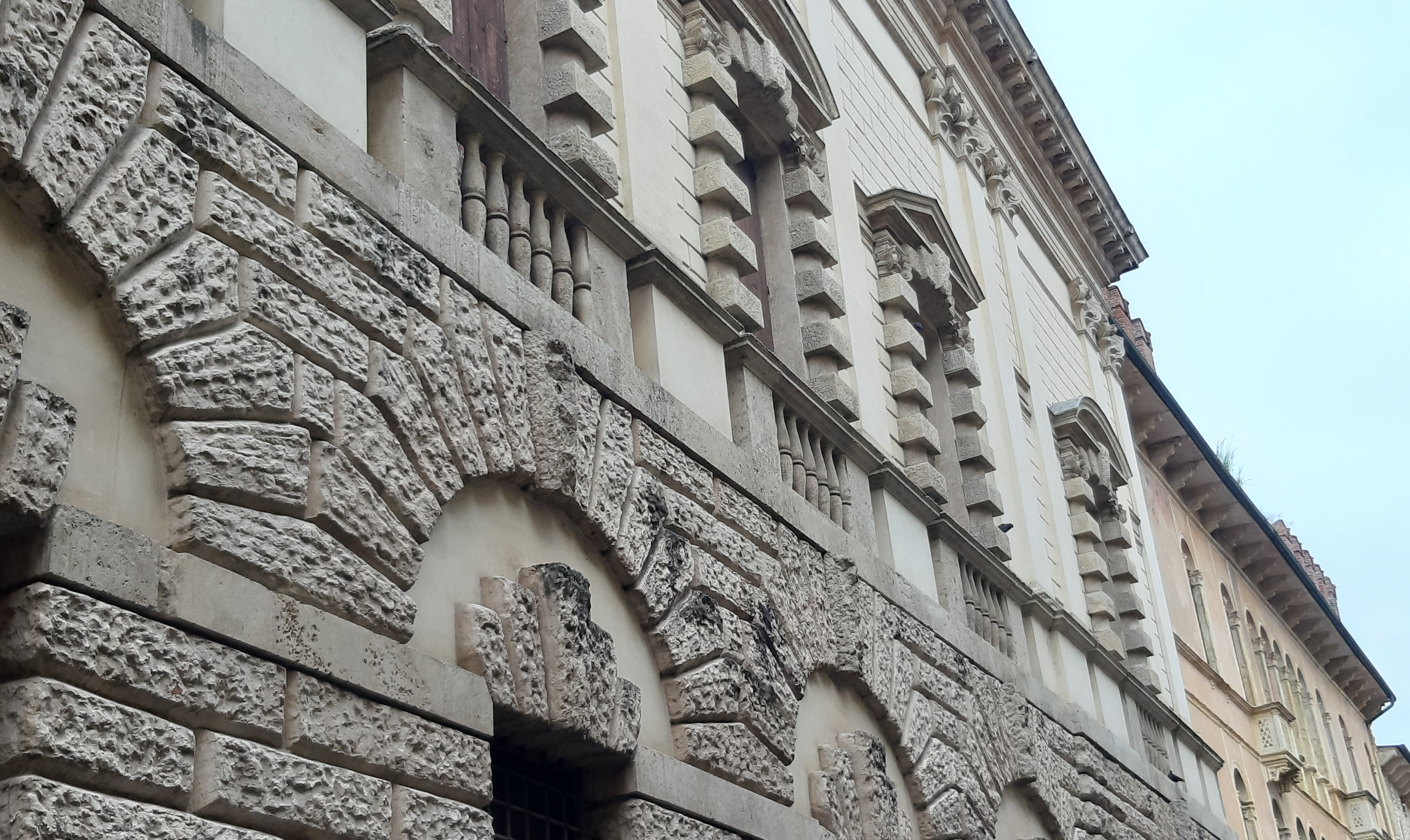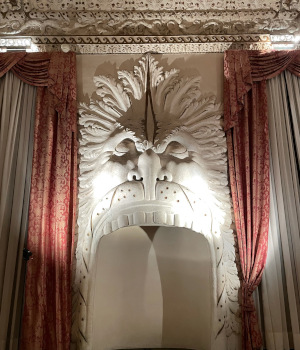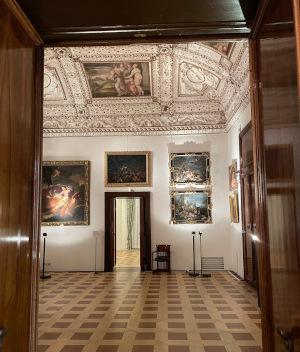Le Gallerie di Palazzo Thiene

The palace
An original example of Renaissance architecture, Palazzo Thiene was designed by Giulio Romano and built by Andrea Palladio, who also designed the executive project. Purchased by Banca Popolare di Vicenza in 1872, it has been owned by the Municipality of Vicenza since 2021 and is part of the civic museum system.

The first nucleus of the complex, owned by Ludovico Thiene, stands on Contra’ Porti and was built at the end of the 15th century by architect Lorenzo da Bologna. The building was purchased by Banca Popolare di Vicenza in 1872 and was restored in the following years by the architects Luigi Toniato (1876-1878), Antonio Caregaro Negrin (1884-1885) and Piero Morseletto (1949-1952), to answer to the needs of the new owners. The frescoes currently visible on the façade also date back to the end of the 19th century and were created by the painters Agostino Bottazzi (1877) and Giovanni Busato (1877-1888).

On Contra’ San Gaetano Thiene, you can see Palazzo Thiene of Marcantonio and Adriano Thiene, who in 1542 commissioned Giulio Romano to design the grandiose project for their family residence, which was to be connected to the portion built by their grandfather Ludovico. The 15th-century buildings and adjacent houses would therefore have had to be demolished to create a single building that would have included the entire block, with the main façade on the current Corso Palladio.
Andrea Palladio, initially commissioned as a stonemason, replaced Giulio Romano in the construction of Palazzo Thiene after the famous architect returned to Mantua and subsequently died in 1546.
Palladio softened Giulio Romano’s more vivid tones, exemplified by the rustication of the ground floor and the rusticated columns of the atrium, giving the building greater balance and composure. In particular, Palladio lightened the upper level of the façade with a gentle rustication and Corinthian pilaster strips, in addition to the smooth, white top structures of the atrium, which created a strong contrast with the rustication below.
The works were interrupted upon Marcantonio Thiene’s death in 1560 but, despite being unfinished, the Palazzo remained a cornerstone of Palladio’s production.
The decorative apparatus of the palace was created by some of the greatest artists active in Vicenza at the time: the stuccoes and sculptures by Alessandro Vittoria and Bartolomeo Ridolfi, the frescoes by Bernardino India and Anselmo Canera.


The artistic collections
Palazzo Thiene still houses the most significant part of the art collections of the former Banca Popolare di Vicenza: paintings made between the 16th and 19th centuries, mainly by Venetian artists; the ceramics by the Antonibon factory; the collections of popular Venetian dishes from the 19th century; the sculptures by Arturo Martini.
Last October, a new permanent space was created entirely dedicated to the works of Vicenza sculptor Nereo Quagliato. The new Galleria Nereo Quagliato exhibits 39 works: 30 works donated to the city by Armando Peressoni in memory of his son Mauro and 9 from the collection of Musei Civici di Vicenza.
The palace was opened to the public for the first time by the Municipality of Vicenza on September 25, 2021 with a free open day. From September 26 to December 26, 2021, entry was possible on Saturdays and Sundays with guided tours by reservation, organized by the group of qualified tourist guides of Vicenza and Consorzio Vicenza.
Since January 15, 2022, Gallerie di Palazzo Thiene have been open four days a week, from Thursday to Sunday, and have officially entered the city museum circuit.

